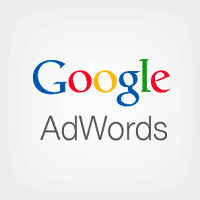Google Ad Words is one of the most pervasive ways to advertise on the Internet. The popularity of Google is partly due to the reach they have. However, it is also due to how easy it is to create and launch an ad. In this article, we are going to register for Google Ad Words. Then we will build and launch our first ad.
Before we get started, there are a large number of Google Ad vouchers available. These are only available to new accounts. Therefore, do a search for “Google Ad Word vouchers.” It is not hard to find a $100 or even $150 voucher to get started.
Register With Google Ad Words
As with all things Google, register with the service to get started. Open a browser and head to the Ad Words site. You will be asked to log in to your Google account and then shown a form to enter information about your site. This information includes your website address, email, time spent marketing your site, and then it goes right into creating an ad.
Creating an Ad
There are several key aspects to an advertisement in Google. There is location, which can limit the geographical areas where the ad is shown. The area can be as big as a country or down to a single city. There is also a distance from the business option for traditional business locations.Then you need to decide what you want to advertise. This categorization of a service or product helps Google determine the pricing for your ad and the target market. Language restrictions can also be set.
Now that you have a location, you need to decide what you want to advertise. This categorization of a service or product helps Google determine the pricing for your ad and the target market. The better you can match the category to the ad, the more effective the ad will be.
The Ad Text
Now we move to the Ad itself. There are four lines to an ad. First, we select our site to give the exact page we want users to visit. Place a call to action on the landing page. Also, optimize the page to convert visitors to customers. We then have three lines for entering the ad text. There are two headline fields that are limited to thirty characters each. There is also a description that is limited to eighty characters in length. You can see how your ad appears in the section next to your content.
This limited text is your first shot at bringing in a customer so pay attention to details. Your goal is to have customers click on the ad, not just generate clicks. Make sure you are as clear as possible in what you are advertising. The better that matches the desires of those that click the ad, the more effective your ads will be.
The Budget
The next step is setting a budget. You can limit the amount of money you spend each day and maximize the bid per ad. This system works on each potential ad being open for a bid. Your settings help you win bids to place an ad. Thus, the more you spend, the more you can win bids. The bid system adjusts bid amounts throughout the day. This approach means every bid will win sooner or later.
Note the typical bid range for your product and keywords. This will help you determine an amount that works best. When you set a budget too low to win bid Google will pause the campaign or alert you that the budget and keywords are not a good combination.
Turning on the Ad
Once you enter your payment information you will need to review your ad. Then you should take the time and check your spelling and links. A simple error in an ad will render the whole thing ineffective. After the ad is reviewed confirm it and your ad is ready.
Further Reading
This is only the beginning of the power of Google AdWords. These all offer great insight into mastering advertising for your business.
Ultimate Guide to Google AdWords: How to Access 1 Billion People in 10 Minutes (Ultimate Series)
Learning Google AdWords and Google Analytics
[sgmb id=”1″]

